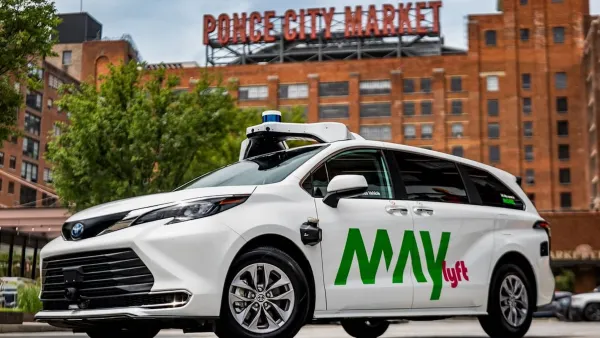In the wake of a high-profile (and fatal) accident involving an autonomous Uber car, the safety debate is trending. But the broader economic picture still points to a future of shared driverless rides.

After an Uber self-driving prototype struck and killed a pedestrian in Arizona, the company has suspended test operations in other cities. But according to this piece from the Economist, self-drivers will likely hit the streets as fleets of "robotaxis" in the Uber vein, not as privately-owned vehicles. That is, if the technology can be made safe enough.
"Although today's experimental vehicles are modified versions of ordinary cars, with steering wheels that eerily turn by themselves, future AVs will have no steering wheel or pedals and will come in all sorts of shapes and sizes; pods capable of carrying six or eight people may prove to be the most efficient design."
The economic argument here is that robotaxis can earn for most of the day, while private vehicles sit idle most of the time. "The initial deployment of self-driving vehicles as robotaxis makes sense because they only need to work within a particular area—and because the sensors needed for a fully autonomous AV to sense its surroundings and figure out how to respond currently cost more than the vehicle itself."
The piece conjectures that in several decades, robotaxis will account for the majority of urban miles travelled. That'll open up plenty of land currently used for parking. "Eventually, perhaps by 2030 or so, the cost of sensors will fall and it will no longer be prohibitively expensive to buy your own self-driving vehicle. The question then is whether you would want to."
FULL STORY: Why driverless cars will mostly be shared, not owned

Planetizen Federal Action Tracker
A weekly monitor of how Trump’s orders and actions are impacting planners and planning in America.

Chicago’s Ghost Rails
Just beneath the surface of the modern city lie the remnants of its expansive early 20th-century streetcar system.

Amtrak Cutting Jobs, Funding to High-Speed Rail
The agency plans to cut 10 percent of its workforce and has confirmed it will not fund new high-speed rail projects.

Ohio Forces Data Centers to Prepay for Power
Utilities are calling on states to hold data center operators responsible for new energy demands to prevent leaving consumers on the hook for their bills.

MARTA CEO Steps Down Amid Citizenship Concerns
MARTA’s board announced Thursday that its chief, who is from Canada, is resigning due to questions about his immigration status.

Silicon Valley ‘Bike Superhighway’ Awarded $14M State Grant
A Caltrans grant brings the 10-mile Central Bikeway project connecting Santa Clara and East San Jose closer to fruition.
Urban Design for Planners 1: Software Tools
This six-course series explores essential urban design concepts using open source software and equips planners with the tools they need to participate fully in the urban design process.
Planning for Universal Design
Learn the tools for implementing Universal Design in planning regulations.
Caltrans
City of Fort Worth
Mpact (founded as Rail~Volution)
City of Camden Redevelopment Agency
City of Astoria
City of Portland
City of Laramie





























